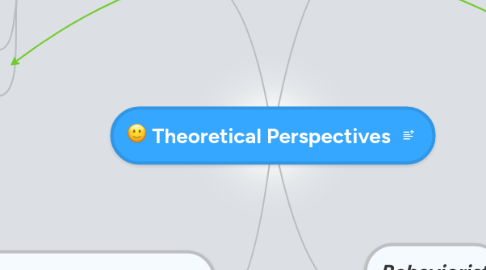Theoretical Perspectives
作者:shelly hawkins


1. Interactionist
1.1. Vgotsky, Bruner, and Halliday
1.2. Vygotsky's basic premise was that language development is influenced by the society in which the individual lives: “higher mental functions are socially formed and culturally transmitted” (Vygotsky, 1978, p. 126). Speech has social origins. It develops in situations where people are interacting with each other in a communicative context.
1.3. The interactionist perspective focuses on the primary role of sociocultural interaction in children's development of language knowledge
1.4. Nature vs. Nurture
2. Cognitive Development
2.1. Jean Piaget
2.2. The emphasis of this perspective is that language is acquired as maturation occurs and cognitive competencies develop.
2.3. This perspective also proposes that a child learns language by using the same mechanisms as for other learning. Thus, there is no unique language mechanism. The close relation between cognitive development and language is based on the belief that, for language to develop, specific cognitive growth must occur first.
2.4. Semantics and morphemic language knowledge
3. Nativist
3.1. Noam Chomsky
3.2. The nativist perspective encourages teachers to use a curriculum that will provide extensive opportunities for children to explore language and engage in hypothesis testing of their developing knowledge of language.
3.3. A child's LAD is activated, resulting in his discovery of the structure of his language (syntactic and morphemic knowledges).
3.4. States that language is an instinct, and the instinct leads them to learn language structure
4. Behaviorist
4.1. B.F. Skinner
4.2. The behaviorist perspective emphasizes the role of “nurture” and considers learning to occur based on the stimuli, responses, and reinforcements that occur in the environment.
4.2.1. INS to insert (Windows)
4.2.2. TAB to insert (Mac OS)
4.2.3. ENTER to add siblings
4.2.4. DEL to delete
4.2.5. Press F1 to see all key shortcuts
4.3. Reinforcement of a child's verbal and nonverbal responses to language directed at him is responsible for the language learning that occurs.
4.3.1. Online Help
4.3.2. Use Cases & Templates
4.3.2.1. Personal Todo List
4.3.2.2. Vacation Planning
4.3.2.3. Meeting Minutes
4.3.2.4. Project Plan
4.3.2.5. more...
4.3.3. Tools and Gadgets
4.3.3.1. Offline Mode
4.3.3.2. Geistesblitz Tools
4.3.3.3. Email & SMS Gateways
4.3.3.4. Offline Mode
